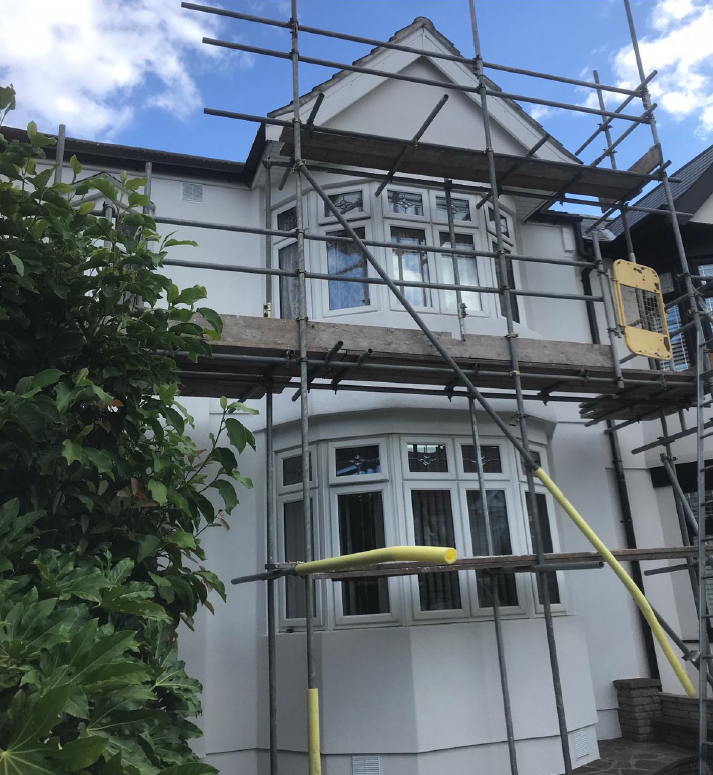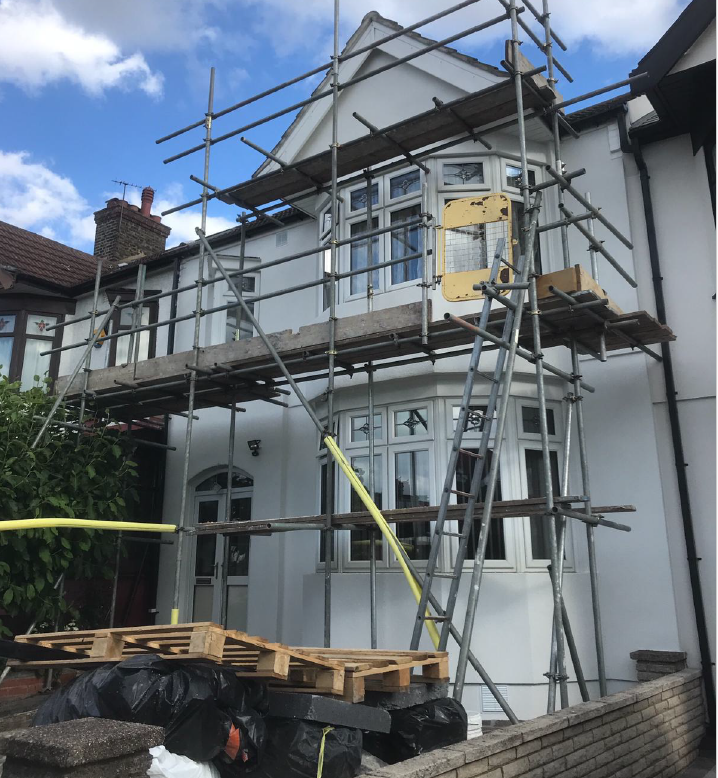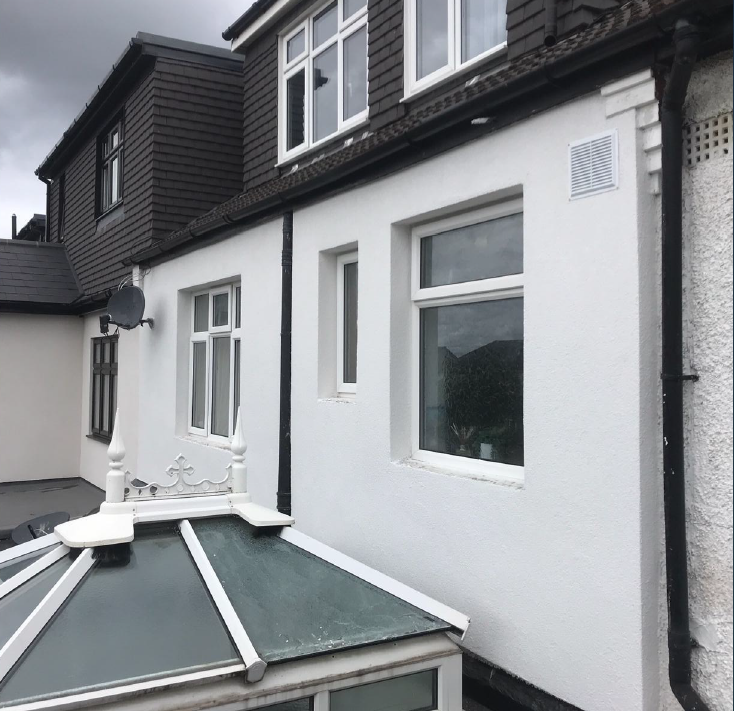External Wall Insulation
External wall insulation is a home improvement technique that involves adding a layer of insulation material to the external walls of a building, creating a thermal barrier. This process helps regulate indoor temperatures more efficiently by preventing heat loss in the winter and heat gain in the summer. The insulation is typically covered with a protective render or cladding, enhancing the building's aesthetics while providing weather resistance. External wall insulation is an effective solution for improving energy efficiency, reducing heating and cooling costs, and enhancing the overall comfort of a property. It is often chosen for both its practical and aesthetic benefits, contributing to a more sustainable and visually appealing living space.
Why choose External Wall Insulation?
- Helps to reduce energy bills
- Stable and regulated indoor temperature
- Aesthetic improvement to the external view of your property
Are grants available for External Wall Insulation?
Yes, there are grants available. Should your walls be uninsulated then they will be required to be insulated under Eco4 funding in order to qualify for a grant. Please note, in order to qualify for a grant, ventilation may need to be upgraded as part of your package of works.
FAQs
How does external wall insulation work?
External wall insulation works by adding a layer of insulating material to the external walls of a building, creating a protective barrier against heat transfer. This layer acts as a thermal envelope, preventing the escape of heat during colder months and inhibiting heat penetration in warmer weather. The insulation material, commonly composed of materials like expanded polystyrene or mineral wool, is then covered with a protective render or cladding. This not only enhances the insulation's effectiveness but also provides a durable and weather-resistant finish. By regulating the building's temperature, external wall insulation significantly improves energy efficiency, leading to reduced heating and cooling costs while simultaneously enhancing the overall comfort and aesthetics of the property.
Will external wall insulation save me money?
Yes, external wall insulation can save you money in the long run. By creating a thermal barrier on the exterior of your home, it helps to regulate indoor temperatures more effectively. This means less heat is lost during the colder months, reducing the need for constant heating, and less heat enters during warmer months, decreasing the reliance on air conditioning. As a result, you can experience significant savings on your energy bills. While there is an upfront cost for the installation, the energy efficiency improvements provided by external wall insulation often outweigh the initial investment, making it a financially wise decision over time. Additionally, many regions offer incentives, rebates, or tax credits for energy-efficient home improvements, further enhancing the financial benefits of external wall insulation.
How long does it take to install external wall insulation?
The time it takes to install external wall insulation can vary based on factors such as the size and complexity of the property, weather conditions, and the chosen insulation system. However, as a general guideline, the installation process for external wall insulation typically takes several weeks to complete.
Here are some key stages in the installation process:
Preparation:
This involves cleaning and preparing the external walls, repairing any damage, and ensuring a smooth surface for the insulation material.
Installation of Insulation Material:
The insulation material is applied to the external walls and securely fixed in place. This can involve attaching insulation boards or applying a layer of insulating render.
Finishing:
Once the insulation is in place, a protective finish is applied. This may include a render coat, cladding, or other finishing materials, depending on the chosen system.
Drying and Curing:
Some materials, such as renders, may require time to dry and cure before additional coats or finishing touches can be applied.
Final Checks:
The installation is inspected to ensure that it meets quality standards and specifications.
While the overall process can take several weeks, it's essential to consult with the installation teams to get a more accurate estimate based on your specific circumstances. Factors such as the size of the property, accessibility, and weather conditions can influence the duration of the installation.
I don't want to change the external walls of my property, do you offer an alternative?
Yes, we can offer internal wall insulation instead of external wall insulation. Internal wall insulation will not alter the exterior of your property as the insulation would be added to the internal walls instead. We can run through your options in more detail during your free home assessment.
Certifications
MCS defines, maintains and improves quality by certifying low-carbon energy technologies and contractors – including heat pumps, solar, biomass, wind and battery storage. MCS aims to decarbonise heat and power in the UK’s homes by giving you confidence in home-grown energy.
EPVS is a certification standard that validates the processes used by installers to ensure energy-saving, generating and/or storing calculations/estimates for home energy products are accurate and valid.
TrustMark delivers consumer confidence through its expert network of Scheme Providers and their Registered Businesses. TrustMark Scheme Providers commit to meeting the Framework Operating Requirements and ensuring their Registered Businesses maintain required standards of technical competence, customer service and trading practices.
HIES is a leading consumer protection organisation covering the installation of home energy products. Our promise is to ensure all consumers are respected, protected and educated on their home improvement journey.
GivEnergy are a British Owned Battery Storage Manufacturer with manufacturing/Research and Development facilities in the UK, Ireland, Australia and Shenzhen China (Shenzhen Givenergy Technology Co., Ltd)
The Flexible Energy Oversight Registration Body (Flexi-Orb) helps deliver the safe and controlled sale, deployment, decommissioning and recycling of energy saving, generating and storing products (such as solar PV, boilers, energy storage, heat pumps, electric vehicle energy storage, EV charging points etc).










